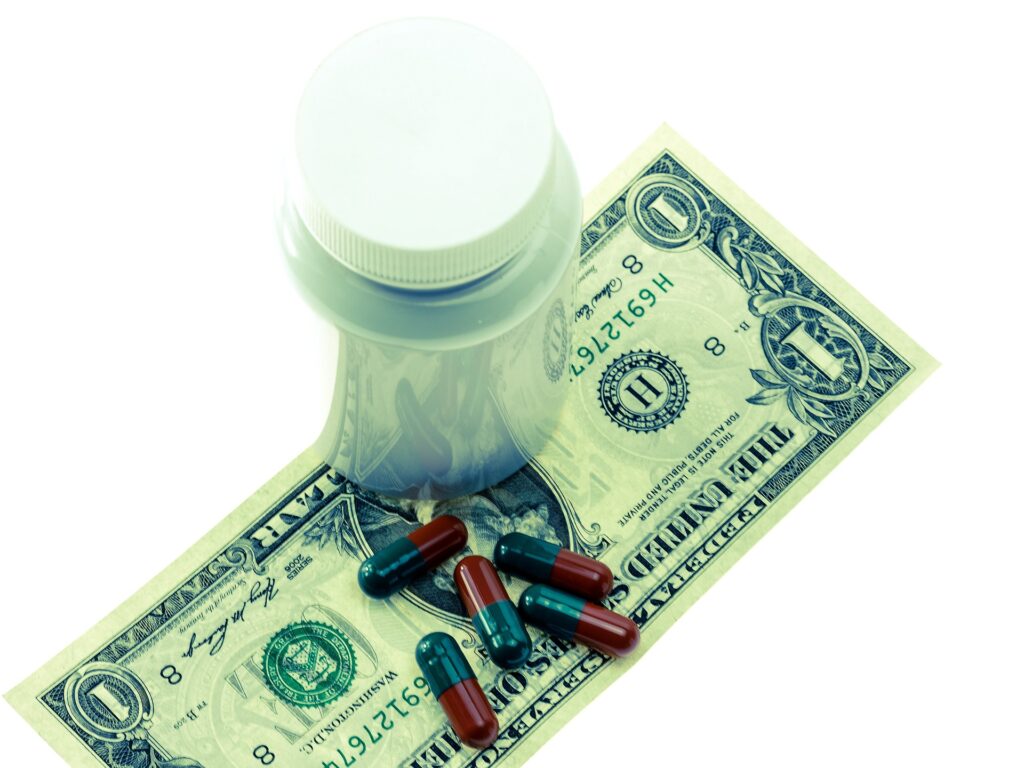The practice of making drug makers give rebates to payers encourages Medicare Part D insurers to steer patients away from generic drugs that cost less, “resulting in beneficiaries paying thousands more out-of-pocket” and higher costs for the Medicare administration, according to a recent investigation by the Office of Inspector General (OIG) of the U.S. Health and Human Services (HHS) Department.
“The large rebates offered by manufacturers for higher-cost hepatitis C drugs benefit plan sponsors but provide little relief to beneficiaries who received the drugs or the Medicare program,” the report, published this month, found.
The investigation suggests that the high cost of prescription drugs is driven by market distortions in the private insurance system. The findings indicate that the new “Inflation Reduction Act,” which seeks to reduce drug prices by allowing Medicare to force manufacturers to agree to lower prices, is missing the mark. Apparently, lowering the cost of drugs, for both patients and taxpayers, requires reforms of the current system in which insurer’s pharmacy benefit managers (PBMs) take rebates from drug manufacturers in exchange for including their products in the formulary of drugs covered by insurers.
“The IRA fails to provide immediate relief to millions of seniors by not requiring Part D plans to share the massive rebates and discounts they negotiate with drug developers directly with seniors at the pharmacy counter,” according to Daniel Durham, Senior Health Policy Advisor, of the Biotechnology Innovation Organization (BIO). “Three insurance company PBMs control 80% of patients’ medicines and use their market power to get tens of billions of dollars in discounts on medicine, but don’t share the savings with the patients they ‘serve.’ ”
PBM practices can mean that “sick patients find they cannot afford the out-of-pocket costs for the medicines their doctors prescribe,” Durham said. “As a result, their health deteriorates, leading to a trip to the ER or hospitalization, which is far more expensive than good treatment. Clearly, this practice is ‘penny wise but pound foolish’ for insurance companies and their PBMs.”
PBMs lead private insurers to eschew generics
The HHS OIG investigated purchases of generic drugs to replace the hepatitis C drugs Epclusa and Harvoni, both made by Gilead Sciences. A subsidiary of Gilead began producing lower-cost generic versions of those drugs in 2019. When Gilead started developing the generics, they said their goal was to see that the company’s efforts to decrease prices would actually reduce the cost of the drugs for patients.
“The average price paid for each bottle of medicine in the United States has decreased by more than 60 percent off of the public list prices, across health insurers and government payers. Due to the complexity and structure of the U.S. healthcare system, however, these discounts provided by Gilead may not always translate into lower costs for patients,” Gilead said.
Despite Gilead’s issuance of generics, the OIG found that Medicare Part D insurers, whose drug purchasing is guided by PBMs, were slow to take advantage of the generics. At the end of 2020, 77% of beneficiaries covered by Medicaid, which is funded directly by the government, were using the authorized generic version of Epclusa, but only 30% of Medicare beneficiaries, who include those covered by private Medicare Part D insurers, were taking the cheaper generics.
According to the OIG’s analysis, the cost of the more expensive hepatitis C drugs used in 2020 exceeded $65,000 per beneficiary while the generic versions cost about $25,000. But the price differences changed after payers took their direct and indirect remuneration (DIR), mostly in the form of rebates the manufacturer pays to have their treatment included in the formulary of covered drugs: After DIR, the more expensive drugs had a net cost per beneficiary of $30,000 while the net cost for the generics only dropped to $21,000 per beneficiary—still cheaper but not by as much.
Patients and Medicare pick up the costs
Even though the rebate reduced the price of the more expensive medicines, patients paid as if the drug was purchased at the full price, the report found.
“Because beneficiary cost-sharing is based on pre-rebate prices, the use of higher-cost hepatitis C drugs in Part D led to thousands of dollars in additional costs for some Medicare beneficiaries,” according to the OIG report.
While insurers are supposed to pass on the savings they gain through rebates from manufacturers by lowering premiums, this is not necessarily happening, the OIG found.
“Large rebates provided by manufacturers for higher-cost drugs covered under Part D allow plan sponsors to recoup much of their gross spending. In turn, lower net spending allows plans to offer lower premiums and attract enrollees,” the report said. “However, policy experts have raised concerns that the reduction in net sponsor spending for higher-cost drugs caused by large rebates has weakened sponsors’ incentives to negotiate lower prices.”
Given the high cost being paid for hepatitis C drugs, almost all beneficiaries taking these drugs exceeded the annual amount they are expected to pay and received “catastrophic coverage,” meaning that the Medicare program, and taxpayers, picked up 80% of the cost.
“After rebates, Medicare’s average catastrophic coverage payment for a beneficiary prescribed a higher-cost hepatitis C drug was nearly double that of a beneficiary prescribed a lower-cost drug,” the report said.
Recommended solutions
The OIG recommended that the Centers for Medicare & Medicaid Services seek to address the problem using the limited power it has to encourage insurers to opt for generics where possible. But the OIG acknowledged that CMS’s leverage in this regard is limited.
Critics of the current system say that drug price reduction for patients will only be possible with more dramatic reforms to the PBM scheme. BIO is a supporter of reform, including through proposed legislation. The bipartisan Pharmacy Benefit Manager Transparency Act of 2022 would make it illegal for PBMs to participate in “spread pricing,” which is defined as “charging health plans and payers more for a prescription medicine than what they reimburse to the pharmacy and pocketing the difference.”
“Simply put, current PBM practices are an impediment to competition, innovation, and patient access,” said BIO in a letter in support of the bill.




